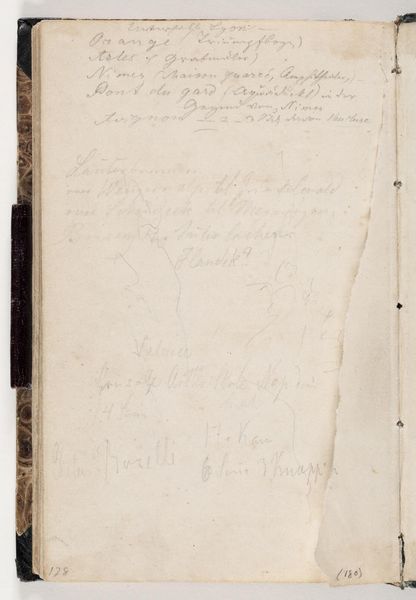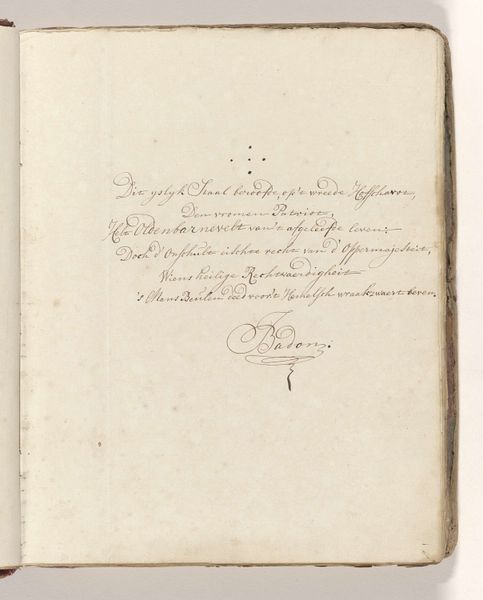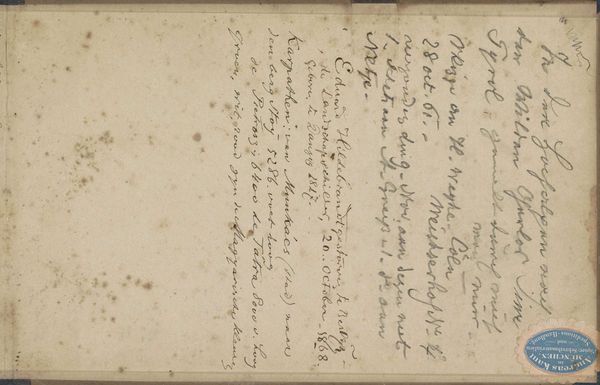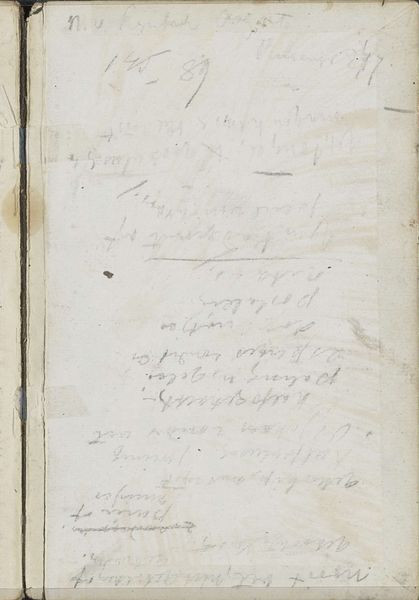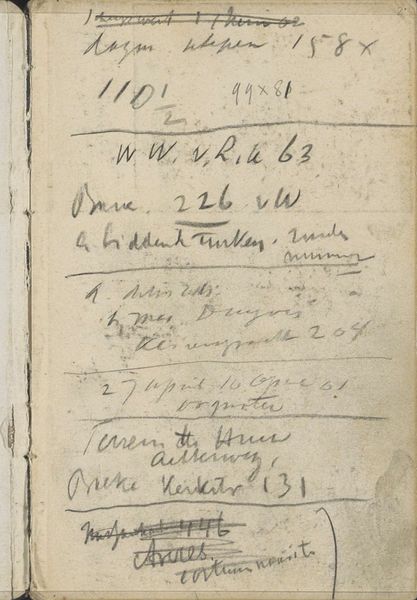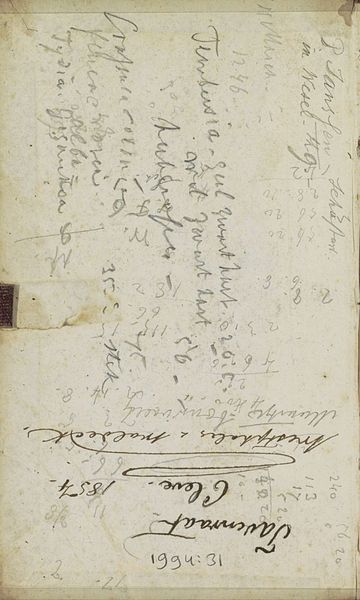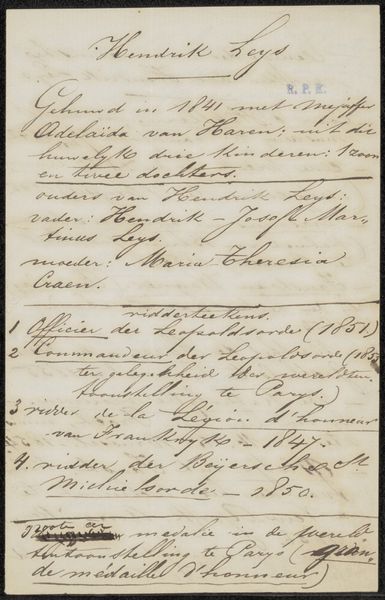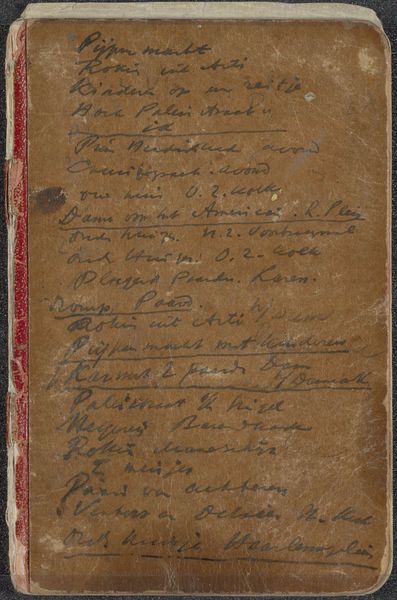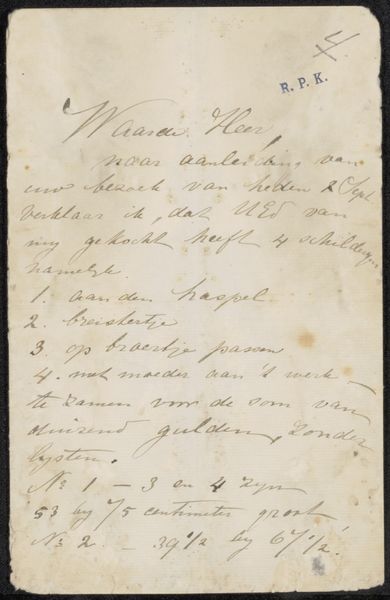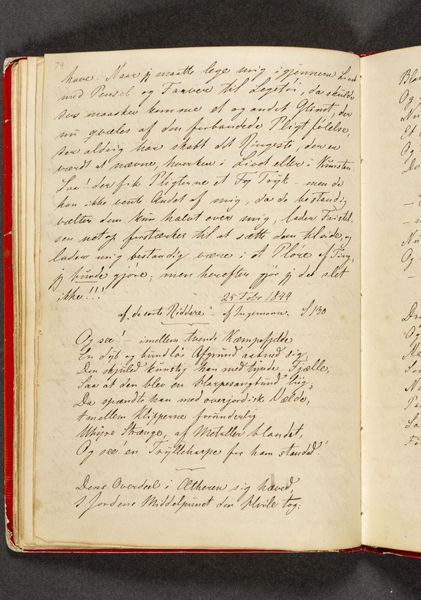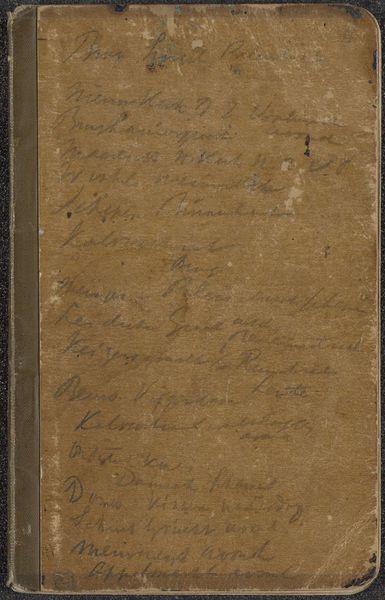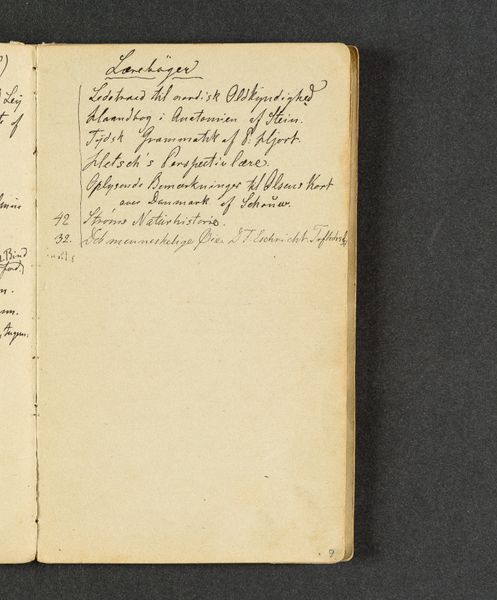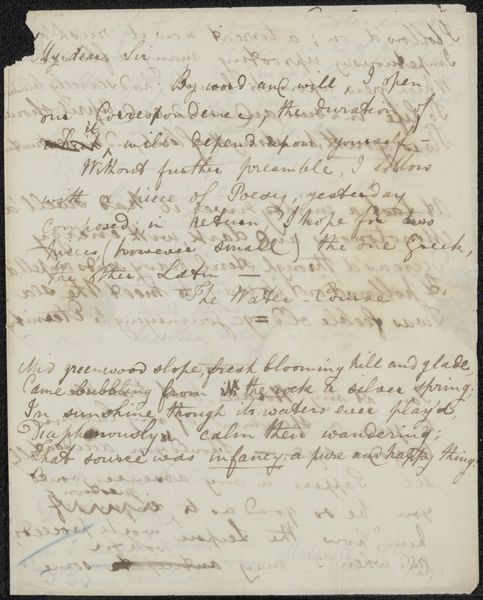
Copyright: Rijks Museum: Open Domain
Curator: Here we have Johannes Tavenraat’s “Signatuur en notities,” possibly from 1858-1859. It's ink on paper, currently held at the Rijksmuseum. Editor: It looks like a page from a personal sketchbook. It's covered in handwriting, almost like someone's stream of consciousness. What catches your eye about this work? Curator: What intrigues me is the relationship between artistic labor and the mundane act of note-taking. We see a potential raw source material of the artist at work. This piece begs the question, is this the making of art or simply the record of thoughts and experiences? And how do these handwritten observations play into the larger context of Romanticism and its intense engagement with personal expression? Editor: So, you're suggesting it's more than just random scribbles? That the *act* of writing, the *materials* used, elevates it? Curator: Precisely. Consider the ink itself – the physical substance applied to the paper, the pressure of the hand creating the lines. How might the paper's texture, perhaps handmade at the time, contribute to the experience? The handwriting gives the artifact not just data, but physical information from Tavenraat's time. It blurs the lines between craft and high art. The “how” it was made is critical to its meaning. Does that shift how you see it? Editor: Absolutely. I was initially drawn to its chaotic, informal nature, but I didn't consider how much the process itself contributes to the meaning. The medium *is* the message, right? Curator: In a way, yes. This invites us to consider the labour, the resources that converge. This approach provides tangible insights into how artistic production functions. Editor: That's a perspective I hadn't considered before, but it adds another layer to the experience. It gives importance to not just *what* is made but also to *how*. Thanks!
Comments
No comments
Be the first to comment and join the conversation on the ultimate creative platform.
